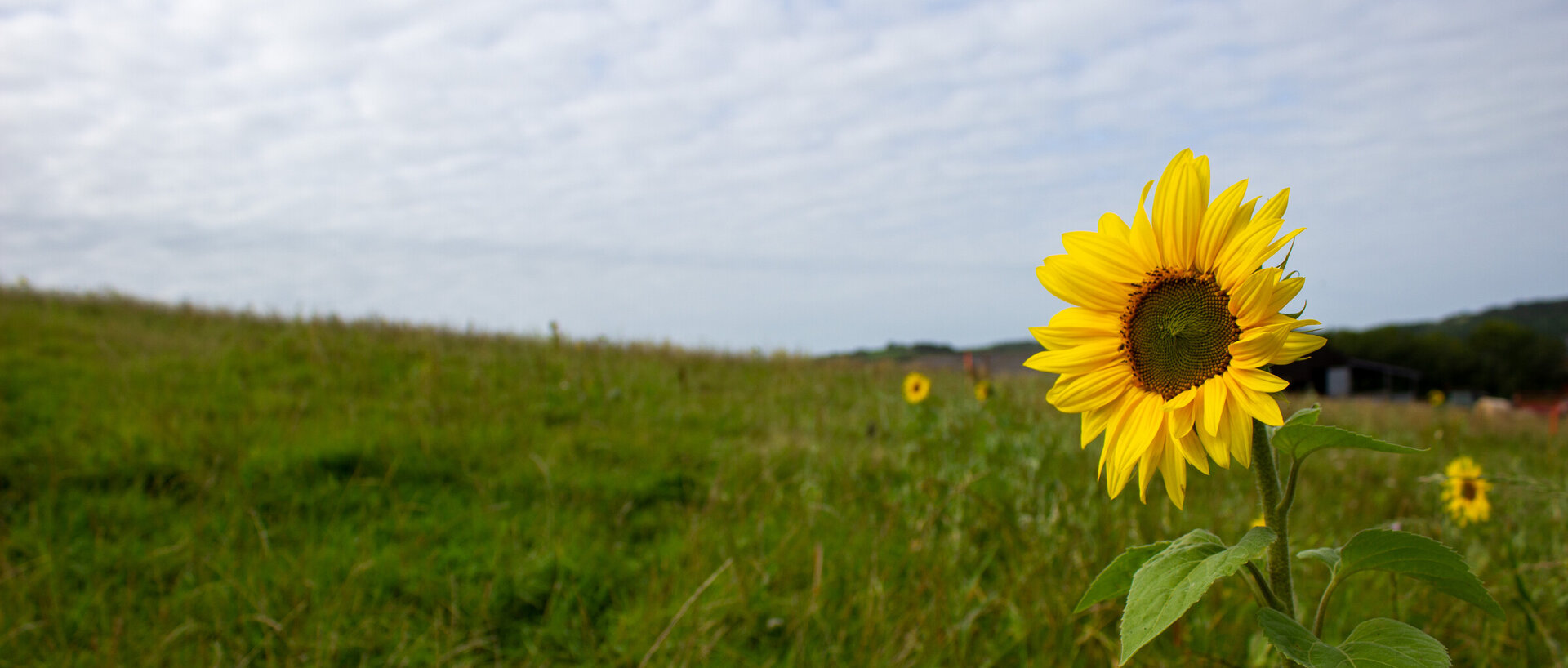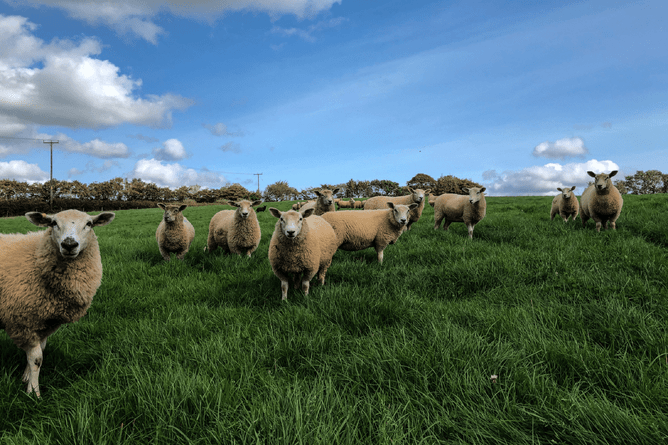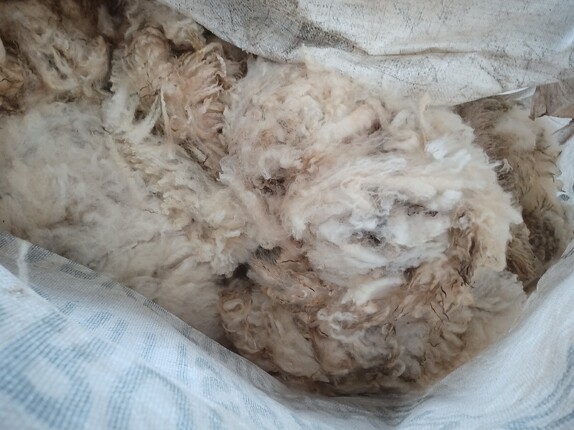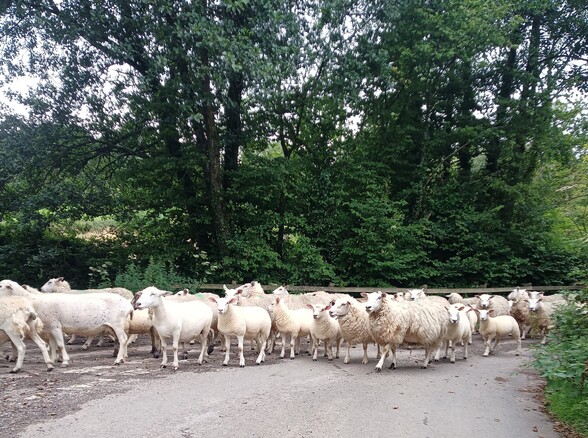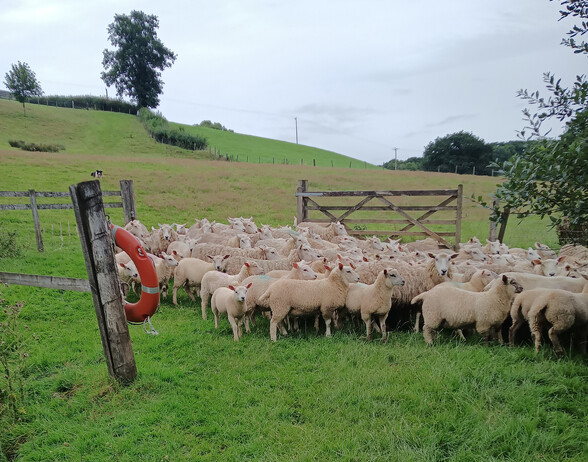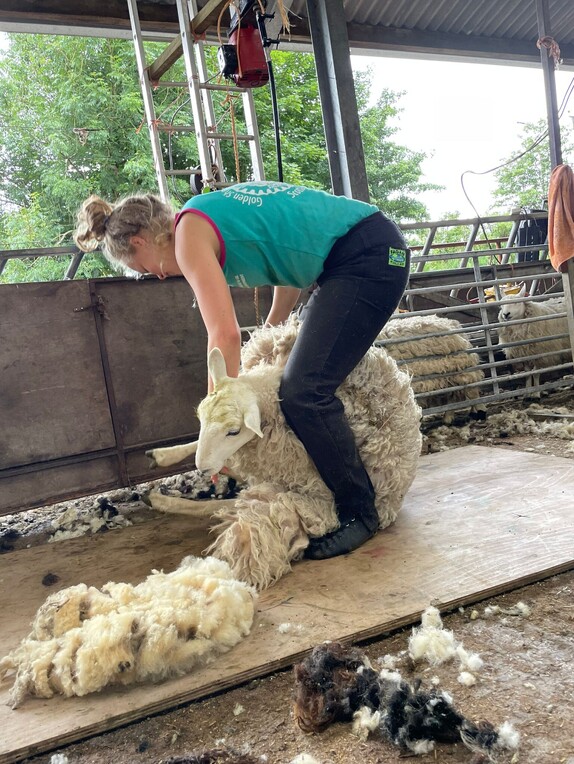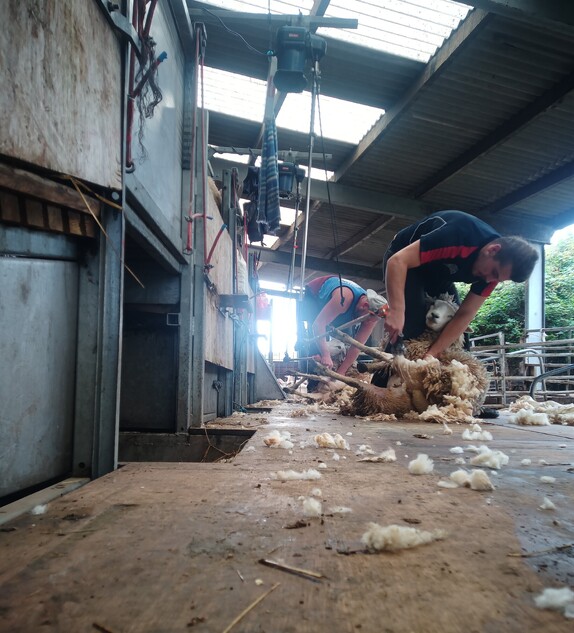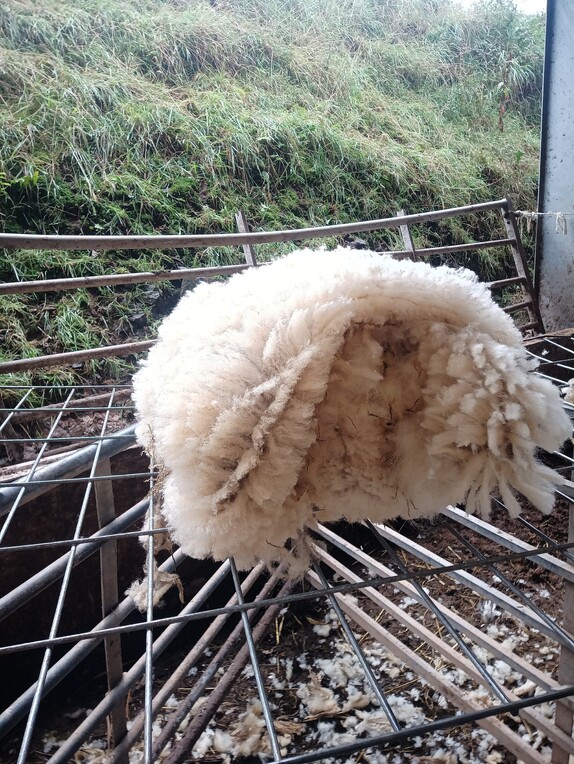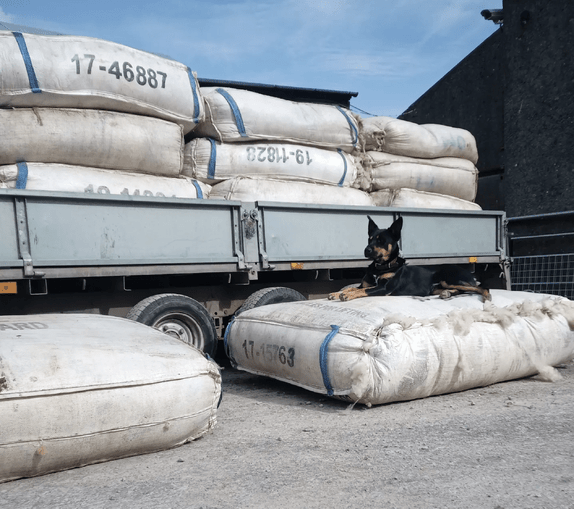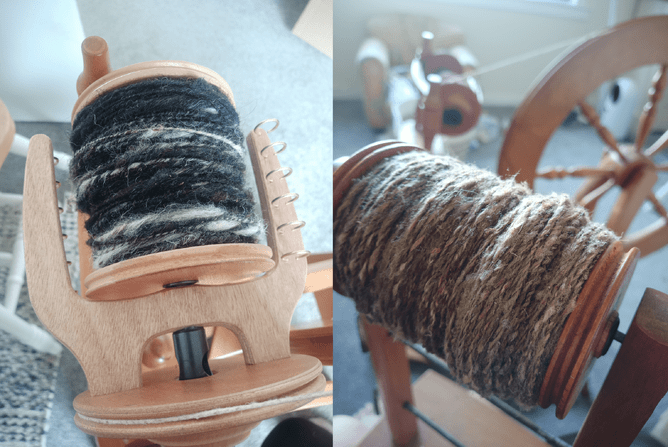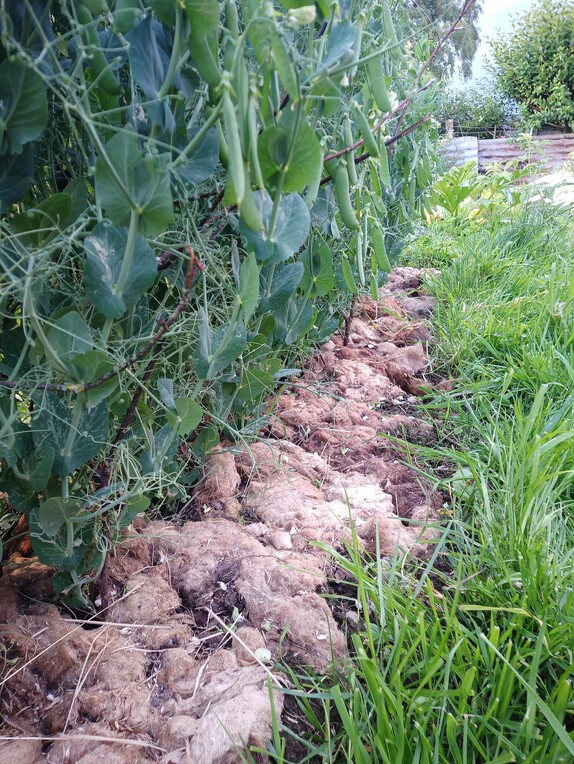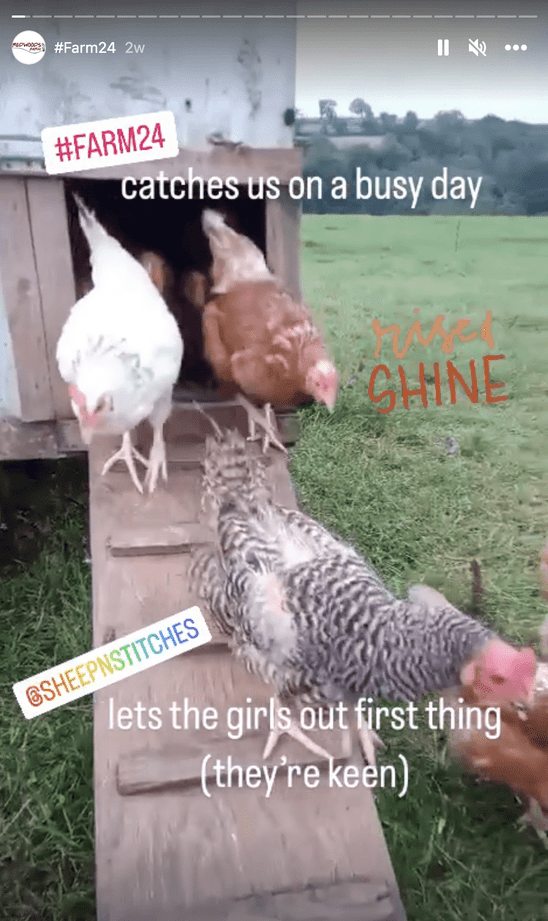A guest blog by Suzie Chapple, following our shearing 2023.
As the eldest daughter of Mark & Pauline and sister to Amy, Suzie Chapple has been involved in farming all her life. Now working as a farm and equine vet in practice in Scotland, Suzie has a very active passion in all things sheep, having worked her way through Uni as a rousey (wool handler) and shearer, along with having a particular interest in sheep health through her veterinary work.
As an extension of this passion, in her spare (?!) time, Suzie loves working with fibre particularly native British breeds, using natural hand dyeing methods, spinning, knitting avidly and even crocheting occasionally - in fact, she is rarely seen without some form of knitting, often with several projects on the go at any one time. She can be found on Instagram as @sheepnstitches sharing much of her crafting and other musings (a great follow if you're on Insta).
Following a trip home to help us with shearing at the beginning of this month, Suzie has written a guest blog on her favourite subject - sheep! So it's over to her to tell you more . . .
Our relationship with wool
As a country, we’ve historically had a long, rich relationship with wool. In years gone by whole towns were built on the wealth of wool, and it was a key export product. From the 1570s til 1590s it was even law that, with the exception of nobles, Englishmen must wear a woollen cap to church on Sundays, in order to support the woollen industry. Over the years, as wool processing mills exploded in production, more and more wool was cheaply imported from countries such as Australia and New Zealand and demand for British wool crashed (ref 1).
These days, to most UK sheep farmers wool is simply a byproduct to get rid of as a result of shearing sheep for their own welfare. At Redwoods, part of the flock is made up of Exlanas, a wool-shedding breed whose coat is more like that of a goat, and the rest are woolly Highlander ewes that we shear once a year.
Why do we shear sheep?
Wool acts to insulate the sheep against the wind, rain and cold, but also stops the harsh heat of the sun hitting directly onto the sheep’s backs.
However, since most domesticated sheep have been bred to not drop their fleece in order for us to be able to harvest it, sheep must be shorn once (sometimes twice) a year. This is to ensure their coat does not become too heavy and become the perfect damp, mucky environment for blowflies to lay their eggs which hatch into maggots that eat away at the sheep’s skin if not promptly treated.
How is shearing carried out?
Learning to shear is like learning to dance with the sheep it always seemed to me . . . . though they don’t always want to do the same moves as you! Although as with most things, repeated practice and the right tools for the job certainly makes things easier over time.
Why use contract shearers?
Shearing is a specialist skill, and whilst many farmers can shear, often shearing contractors are used. As specialists who are practising these skills daily, these contractors are able to shear the whole flock efficiently. This has the added benefit that it frees up the farmer to move the flock around the farm as required to keep the shearing moving efficiently, along with sorting them for weaning and other reasons as necessary. Importantly, this puts least stress on the animals, as they are not kept in the shearing shed longer than necessary and are able to return to the pasture.
Most contractors can call on a range of personnel to provide a shearer and rousey (wool handling) team, according to the size of flock and personnel availability at the farm. These contractors also bring in specialist shearing equipment that otherwise may only be used once per year on an individual farm, such as the shearing trailer and specialist cutting gear, in which contractors can afford to invest in the purchase and maintenance, given they are using it on many farms each season.
At Redwoods we use a local contractor from just over the border in Somerset - in fact, these are the guys I spent many a summer working with through Uni! It's also a great chance for me to head south from Scotland, catch up with the family and help out with the prep work of moving sheep around and wool handling on the day.
A practiced shearing method
If you’ve ever had chance to watch sheep being shorn (maybe at an agricultural show, or even a shearing competition), you may have noticed that the shearer works around the sheep with the same method each time: first removing any belly wool, then clearing the sheep’s hind left leg and over the hip, then steps up the neck to clear around the left shoulder, flank, then onto the ‘long blows’ across the back. Then the ‘money side’ as shearers say - working down the right-hand side of the sheep.
Shearers are paid per sheep they shear so efficiency is key, and the shorn sheep leaving the board means money in their pocket! However, care for the sheep is super important, and holding the sheep correctly means it is more relaxed and cooperative, keeping things calm and non-stressful for all parties involved. The aim is to get the fleece off in one piece, and the wool handler or ‘rousey’ rolls and tightly packs the fleeces into large bags which are then stitched shut and sent off for processing.
Redwoods #FARM24 story
For interesting insights and more content on what happens during shearing day at Redwoods Farm, check out the Redwoods Twitter thread and Insta highlight, as it fell on #FARM24 this year.
Farmer's Guardian run this social media day, showcasing 24 Hours in Farming, also known as #FARM24, as agriculture's biggest digital extravaganza that showcases the extraordinary role of British farmers to the general public as the nation's most trusted food producers and guardians of our iconic countryside.
The campaign started at 5am, August 3, with farmers and industry organisations throughout the UK joining forces once again, harnessing the immense power of social media and bringing farming closer to the masses.
Supported by Morrisons, this flagship campaign highlights what a typical day in agriculture can look like and educated consumers on the incredible journey from field to fork.
The uses and benefits of wool
Since demand for wool dropped in this country, breeding for a good quality fleece has dropped far down the priority list for most sheep farmers, with growth rates, conformation and lambing ease being of greater importance.
The quality of fleeces shorn from British sheep breeds varies hugely, with rough fibre from hill breeds, such as Swaledales and Scottish Blackfaces, being excellent for hardwearing carpets, through to fine fleeced Blueface Leicesters, Shetlands and lustrous Romney fleeces being much more suitable for clothing items.
Wool has a huge range of benefits, both for us and the planet. Natural wool has an incredible ability to insulate, and as a frequently cold person wearing wool has absolutely solved my problem of freezing toes!
It also has an excellent ability to retain its shape, especially in wools with more ‘crimp’ or coil to the fibre that springs back into shape after a gentle wash. I think the worry of shrinking woollen garments in the washing machine may certainly put some people off wearing it, but a gentle wool cycle and the right wool-friendly detergent means that I even feel brave enough to put my hand-knit socks and jumpers in the machine.
Wool - a versitle, sustainable material
Wool is naturally flame-retardant as a result of its nitrogen content, making it a safe option for insulating homes, upholstery fabric and bedding. Wool can also hold one-third of its weight in water without feeling damp, making it comfortable to wear as outdoor clothing in many weathers.
Wool is composed of around 50% carbon (ref 2), a result of sheep grazing on pastures which have locked away carbon in the air through photosynthesis. Therefore, when we choose to use wool to clothe us, insulate our homes and make our duvets, mattresses and more, we are keeping this carbon locked up instead of using synthetic plastic alternatives.
And at the end of its useful life, wool can be broken down back into a nutrient-rich compost to feed the land, that feeds the sheep, and so the cycle continues…
Watch this space!
We're grateful to Suzie for sharing her knowledge in this blog and hope you've enjoyed reading a few insights into what shearing entails. We hope to share some exciting woolly news soon and we may even be able to persuade Suzie to write us another blog!
We may have some other guest blogs stuffed in our wellies for later too, so that's another reason to keep your eyes peeled on our website & socials.
Don't forget to follow Suzie on Insta and check out our #FARM24 coverage by clicking on the posts below.
#Farm24 catches us on a really busy day (when are they not!) as we’re #shearing today, more on that later 🐑
— Redwoods Farm (@RedwoodsFm) August 3, 2023
But first we have to do all the regular jobs, as all the livestock still need taking care of.
First we check in on our latest 🐖 arrivals (vids taken late last night) 😍 pic.twitter.com/caTc3D4Rt3
References
Ref 1 - History of the Wool Trade by Historic UK, an online magazine dedicated to bringing to life the history and heritage of Britain.
Ref 2 - Carbon impact of sheep's wool from The Carbon Smart Materials Palette, an Architecture 2030 Project with contributions to date from over 25 individuals from in excess of 20 organisations. It provides attribute-based design and material specification guidance for immediately impactful, globally applicable and scalable embodied carbon reductions in the built environment.
